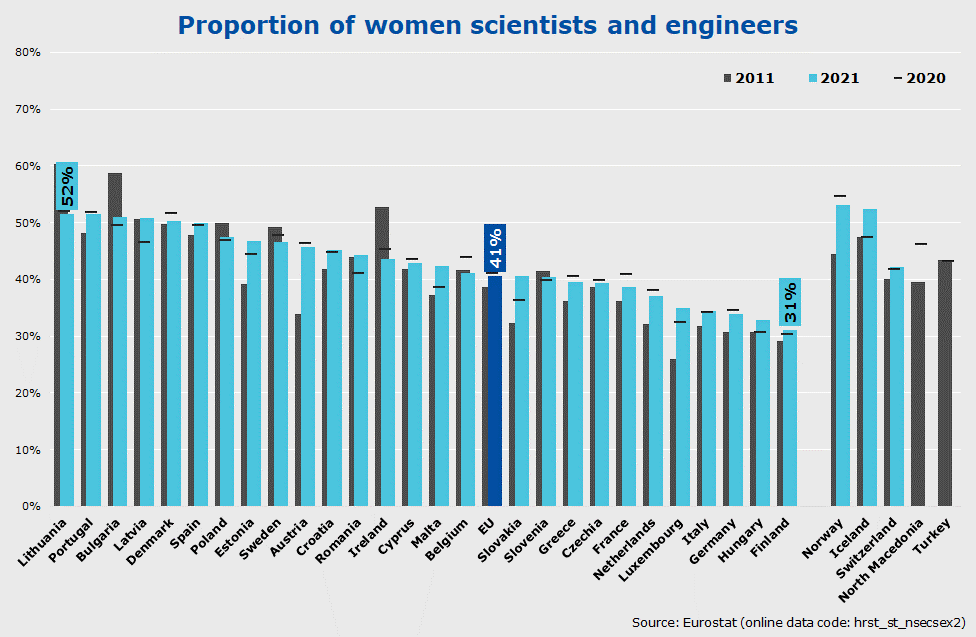Eurostat data on human resources in R&I

date: 16/06/2022
According to the latest figures from Eurostat, in 2020, there were 1.89 million researchers (in FTE) working in the Member States, 546 thousand more compared with 2010. The EU Member States with the highest number of researchers employed are the biggest ones: Germany, France, Italy and Spain.
Between 2010 and 2020, the number of researchers (FTE) almost doubled in Greece and Hungary, totalling 41 800 and 42 000 respectively last year. The same happened in Poland, where there were 124 400 FTE of these professionals in 2020, 59 900 more than in 2010. Other notable increases were recorded in the Netherlands (89%), Malta (69%), Cyprus (67%) and Ireland (66%). The only Member State that registered a decline was Romania with -7%.
By sector, most researchers worked in the business enterprise sector (55%) and the higher education sector (33%), followed by the government sector (11%).

According to the latest figures from Eurostat, in 2021, there were more than 17 million scientists and engineers in the EU, an increase of 6.9% in comparison with 2020. The number of scientists and engineers increased in all Member States, with the exception of Bulgaria, Croatia, Italy and Finland. The biggest growths were registered in Slovenia (+22%), France (+21%) and Malta (+19%). In 10 years, the number of scientists and engineers in the EU increased by 38%, with the biggest improvements in Malta (+205%), Luxembourg (+110%) and Austria (+105%).
Of the scientists and engineers in the EU in 2021, 41% were women and 59% were men, similar to 2020. Even though the majority are men, the share of women increased by 2 percentage points in 10 years. The EU countries with the highest share of female scientists and engineers are Lithuania (52%), Portugal (51%) and Bulgaria (51%). On the contrary, the EU countries with the lowest shares are Finland (31%), Hungary (33%) and Germany (34%). In comparison with 2020, the share increased the most in Latvia, Malta and Slovakia. Over the last 10 years, Austria, Luxembourg and Slovakia showed the biggest progressions; while seven EU Member States recorded a decline.
By sector, women were underrepresented in manufacturing, with only 21% of female scientists and engineers, while there was more of a gender balance in the services sector (46%).

